At the end of May I attempted to walk a very long way – one hundred kilometres non-stop from London to Brighton across a weekend. What appeared (in theory) to be an extreme physical challenge turned out to be (in reality) a ludicrous physical challenge. Along the way in the dark through the middle of the night, things began to get out of control. But I’d chosen to do this walk as a sponsored charity fundraiser and wasn’t quite ready to throw in the towel…
The Inspiration
The germ of an idea came from an episode of the old BBC situation comedy Sykes (Walk, broadcast 28th September 1972) that I had watched a few years prior. In this episode, Eric Sykes attempts to walk to Brighton from his home in East Acton to win a wager with his neighbour and qualify for the British Olympic team (with abortive but entertaining results)

Straight afterwards, I googled in curiosity ‘London to Brighton walk’ to learn more about the practicalities of walking from the capital to the south coast. Interestingly, there had been an organised event running called the London 2 Brighton Ultra Challenge: for runners and walkers (and charity fundraisers); 2022 would be the tenth such event.
The real inspiration to do the walk (and fundraise) came from a tragic loss: that of my younger sister Sarah, who died from breast cancer at the horribly young age of thirty-three. I remember Sarah as a wonderfully friendly person and, thinking that it would be nice to try and raise some funds in her memory and that this (walking from London to Brighton) was how I wanted to go about doing it, I signed up for the Ultra Challenge.
I would be raising money for CoppaFeel, a cancer education charity. Their work involves going out and talking to young people in schools, colleges and workplaces about breast cancer awareness, educating them on the dangers and what to look out for. Sarah herself had volunteered some time to go and volunteer for them in the last year of her illness. The fundraising went very well – the response from family and friends on my social media was immediate and positive, and I ended up (to my delight) raising just under £1500.

The Route
The Ultra Challenge began at Richmond-on-Thames and initially followed the east bank of the Thames southwards. At Kingston it veered away from the river and began a long route through suburban London: Kingston, Malden, Stoneleigh, Ewell and Belmont. The only break from residential streets was a short passage through Henry VIII’s old royal park at Nonsuch Palace.

After Coulsdon, the last vestige of the metropolis, there followed the open country of the Surrey Weald. This started with the Farthing Downs, then the Happy Valley and then across the M25 corridor to Bletchingley, Outwood and the halfway stop at Tulleys Pumpkin Farm (near Turners Hill).
Into Sussex the route mostly avoided major settlements and headed southwards down die straight country lanes and footpaths. The walk passed through the colleges at Ardingley and Plumpton and skirted by the settlements of Haywards Heath and Scaynes Hill. Before reaching Brighton the route climbed onto the South Downs plateau, with the final kilometres passing through Falmer and then crossing over to the finish line at Brighton Racecourse.
The event was very well organised – I couldn’t fault the route signage and support and rest facilities along the way. The route (broken up into stages) went as follows:
- Start: Old Deer Park, Richmond, 0km
- Mid-Point stop: Green Lane Recreation Ground: 12km
- Rest Stop: Oaks Park, nr Carshalton, 25km
- Mid-Point stop: New Henhaw Farm, nr Bletchingley, 40km
- Halfway Rest Stop: Tulleys Farm, nr. Turners Hill, 56km
- Mid-point stop: Ardingley College, 67km
- Rest Stop: Wivelsfield, 81km
- Mid-Point stop: Plumpton College, 89km
- Finish: Brighton Racecourse, 100km
Preparation
I signed up for the Ultra Challenge quite late in early April, which left me just seven weeks to get ready for the walk on 28th May. The training programmes for 100km walks normally suggest 12 weeks preparation. For me, between work and other commitments I managed to get in six walks (each between 25-40 kilometres), for approximately 100 miles of training in total. I trained a lot around my home in North Nottinghamshire, walking half the length of Chesterfield Canal for example.

I arrived in Richmond on Friday mid-afternoon (the day before the walk). With nothing much to do, I wandered by the Thames and around Richmond Park for a few hours. Wandering around an unfamiliar park on a hot sunny afternoon carrying my luggage (I had all my clothes and food in a 35-litre backpack) was strenuous work, and time started to drag on.
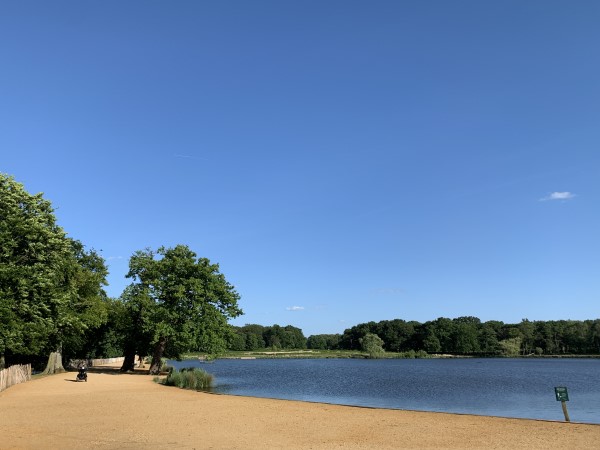
I was booked into a Travelodge in Feltham, 10 minutes away from Richmond. I didn’t check-in until well into the evening and then I went out for a meal after 9pm, choosing to go for an Indian meal. I eventually got to sleep around 11.30.
On the morning I was unsurprisingly quite tense. I got to the start on time but had been stressing myself at the hotel and around Richmond worrying about what breakfast to have – I ended up eating a breakfast roll at the start, at the same time as my group was about to be called up to start at 8.30.
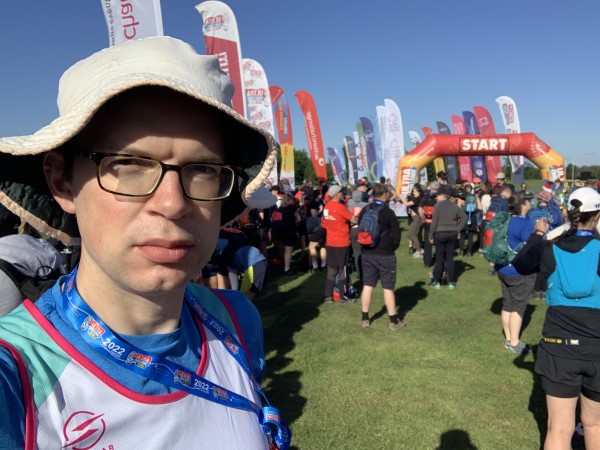
The Journey
Going into the walk, I depended on the notion that my previous experience of completing multi-day treks across mountain terrain and the reasonable amount of preparation that I’d done would stand me in good stead for this 100km distance. However, as the hours steadily ticked by and the remaining distance still appeared mammoth (certainly by normal standards of exercise) I started to realise that I had seriously underestimated the degree of difficulty that I was taking on.
The main trouble along the initial stages by the Thames and through the South London streets was the familiar sense of being amongst a busy swarm of fellow walkers, not to mention the dog walkers and park runners of a Saturday morning. It was uncomfortable being stuck behind groups of people for prolonged periods in the heat of a warm summer day along tarmac roads (and finding myself struggling to pass anyone as I was going as fast as I could).
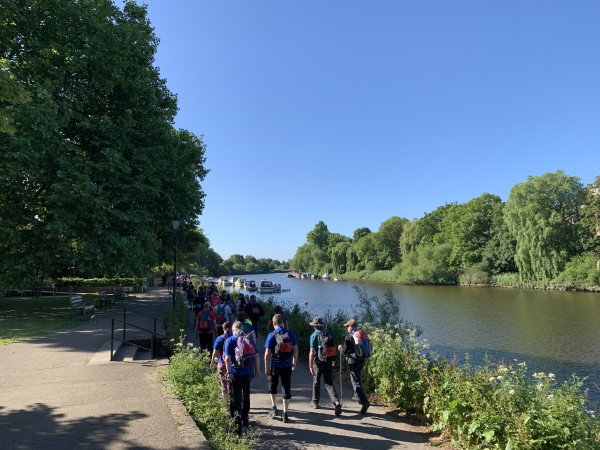
Nobody on the route seemed very talkative and I was left with my thoughts. In truth I wasn’t feeling at my best: I’d woken up with a mild migraine (no doubt linked to my exertions in the warm sunshine in Richmond Park the day before) and later my sinuses started to become irritated. By the end of the dull and relentless London phase, I was fatigued and starting to become fed up. Walking up a hilly road in Belmont, I imagined (copying what Eric Sykes ending up doing) jumping onto the back of a flatbed truck and hitching a lift to Brighton.

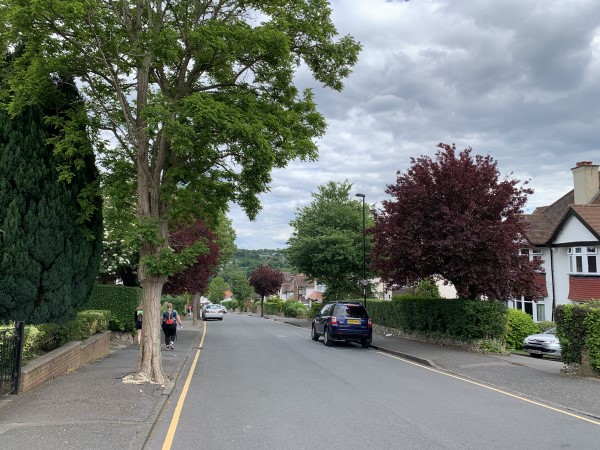
Things didn’t improve going through the quarter distance rest stop (by mid-afternoon) at Oaks Park and then Coulsdon: I had treated my headache and sinus problems, but then indigestion and (worse) incipient diarrhoea were gradually beginning to flare up.
After Coulsdon there was a change in atmosphere (there needed to be). We finally were out of town and had some open country to walk through and appreciate. As if released from the oppression of the concrete jungle, I started talking with some of the other walkers. We mainly empathized about our various sufferings so far and the lunacy of attempting to walk 100km in a day and a bit. Most of them seemed to be seriously afflicted by foot blisters and muscle problems.
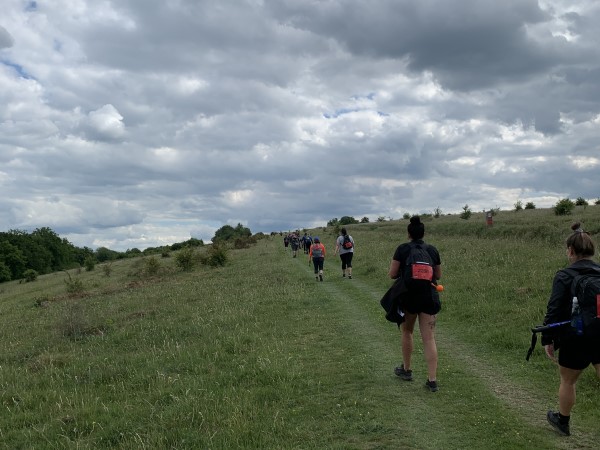

After climbing up onto Farthing Downs, I took a long rest halfway across to try and settle myself down. I found a second wind and in the cooler evening air felt much more like I would on a normal afternoon out in the country: enjoying the scenery of the Happy Valley and the Surrey Weald and stopping for a lolly from an ice cream van. I felt reasonably happy about my progress as I reached the 40km point at the rest stop past Bletchingley around 7.30 in the evening. My stomach had settled, although I found myself needing to use the toilet repeatedly at rest stops. My feet and legs were doing fine (judging by the queue for the chiropodist I was alone in this it seemed).

The fading evening light took me as far as Outwood, a typical English village with an old windmill and wide open common green. By now I’d been walking for well over 12 hours and it was around this point (46km), pushing through the gloom with my head torch shining the way ahead, that my body decided it had finally had enough.
As I was exiting a field over a stile onto an empty lane, my thoughts suddenly turned to the general notion of finding oneself taken seriously unwell, but as I pondered this my mind was unable to join the dots. Five hundred metres further along, I gradually began to feel nauseous and dropped down to the roadside to retch twice. Clearing my stomach made me feel immediately better, so I offered assurances to the two men (and then two ladies) who had come across me (lying in a heap) in the wild grass verge that I was OK to keep going.
They kindly insisted that they accompany me for a while, and we carried on through the night along country lanes (and wooded paths littered with open tree roots). We conversed happily enough at first, but after a quick stop outside the Curious Pig pub at Cropthorne (the only place we passed in the night that was open), the grind of a seemingly never-ending 16km through the darkness was making my body rebel again. I felt my limbs aching, my heart pounding, my mind wincing. We eventually reached the halfway rest point at 12.30am.

The stop at Tulleys Farm was a crisis point. My body seemed to firmly object to what I was up to: my diarrhoea was a constant irritation and my nausea had returned; a moderate feeling of sickness and upset that I didn’t want to aggravate by rising out of my seat. It was also colder at night than I’d anticipated, and I wrapped myself up in my waterproofs. Sat by a trestle table in the middle of the night, I felt cold, lonely and unwell.

Gingerly picking at a plate of spaghetti Bolognese and waiting for my phone and sports watch to be recharged, I slowly weighed up my options. If I’d been sensible and realistic about my situation, I could have quit the walk there and then and got a lift down to Brighton. I’d done well to get to 56km, and I’d seen plenty of others fall by the wayside. It would have been perfectly OK to learn a lesson and accept being unequal to the challenge. But I refused to accept that conclusion; I felt sad – and I’m sorry to say a degree embarrassed – about the prospect of not achieving what I’d come to do and moreover, what my friends and family had sponsored me so generously for in my sister’s memory. So, with my legs still working well I decided to soldier on and see how far I could get.

I joined a group of 3 other walkers on the next stage, travelling 11km to Ardingley. I hadn’t told them that I was feeling sick and gamely tried to keep in with them, chatting away as we progressed through the dark. My upset stomach only got 3km further, when I had to step aside again and (this time) be properly sick. Throwing up revived me again and we made gentle progress through the night as far as the next rest stop at Ardingley College (67km), which we reached at 4.50 in the early morning dawn.

The rest break was a reprise of the previous one at Tulleys Farm. I felt very tired and still mildly sick. My bottom was incredibly sore by now, but still I wasn’t quite ready to quit and kept going. At 6am I set off from Ardingley in a groggy state, not entirely sure quite how I was going to walk 33 kilometres that Sunday to Brighton. Having trudged through the college grounds and then some woodland, I was sick once more after 3km.

Bent over my haunches, I turned to look behind and noticed someone in a fluorescent yellow jacket steadily following me. I set off again, hoping that the supposed pursuer would not have noticed anything untoward about me, and would overtake me in due course. A kilometre further on I stopped to rest on a tree trunk and to let them go by. The walker behind turned out to be one of the volunteer support walkers on the route (called ‘TrekMasters’). I confessed to her that I wasn’t feeling that good at all, after which she accompanied me for the next 10km to get to the next rest stop at Wivelsfield Primary School (for 10am).
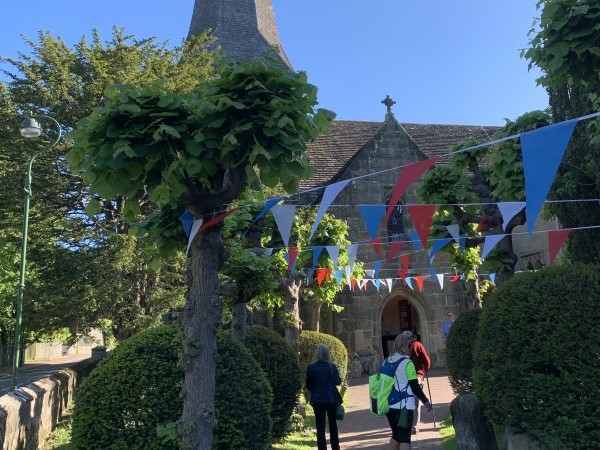

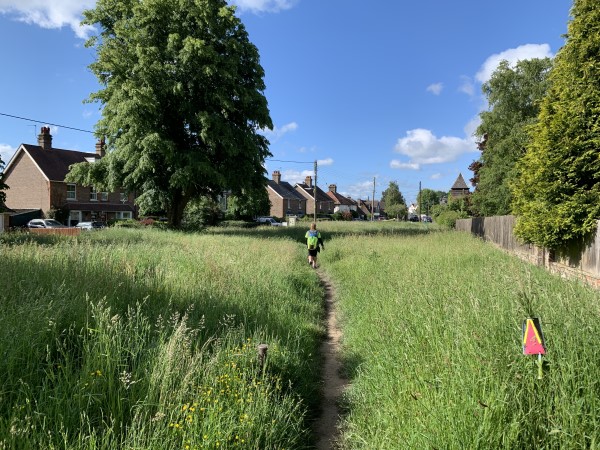
We went at a decent pace and chatted amiably along the way, which took my mind off a little from feeling sick and having to try and hold my bottom together. I was grateful for her support, without realising that was precisely her job: to help struggling walkers keep going along the route.
My sickness had dispersed my appetite (apart from a couple of Mars bars in the night), but I did manage to get a bite to eat at Wivelsfield (encouraged by not wanting to miss out on the excellent catering on offer there): a cold cheese and tuna wrap. I had somehow managed to walk 25km from Tulleys Farm, so with my feet and legs in good order there wasn’t any reason why I couldn’t, with all Sunday left to me, continue to nurse myself onwards and make the remaining 19km to Brighton.
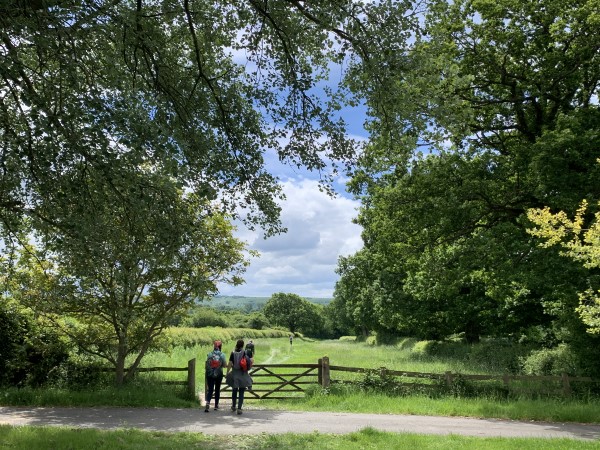
At the last proper rest stop at Plumpton College I was, having been on the go for almost 30 hours, by now very sleepy and the time was well into the afternoon as the last 10km approached. I climbed up the steep ramp from Plumpton onto the South Downs plateau, walked into Falmer (on the edge of Brighton) and then headed towards the racecourse.

There were a couple of nasty little climbs in and out of Falmer (of the kind that are a great irritant at the end of a long walk): the first an endless singletrack country lane in sticky afternoon heat; and then a long tarmac bridleway up a great hill with nowhere to sit and rest (it was bordered by huge weeds and like any bridleway had a steady stream of runners, cyclists and horse shit along it). By 4.30 I was in the last 2km, gradually approaching Brighton Racecourse.
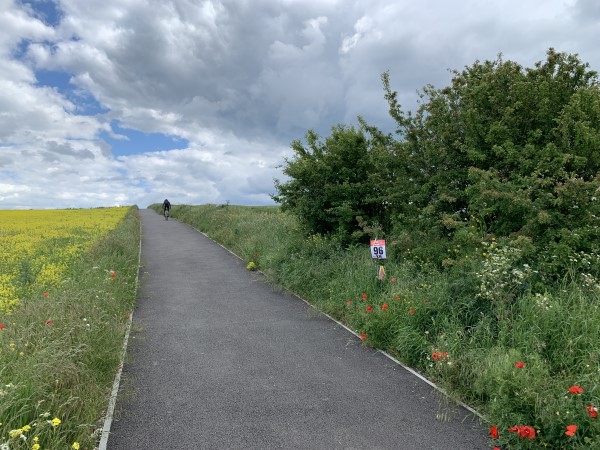
The Finish
My sister Rachel (Sarah’s twin) had agreed to pick me up at Brighton and she and her seven-year-old daughter Matilda were waiting at the finish line to cheer me home at 4.43pm.

The end itself was quite bathetic. After almost perfect weather along the route, showers began to pass over in the last kilometre and almost as soon as I’d crossed the line (and was presented with a medal for completing the 100km) another heavy shower appeared, which forced everyone to run for shelter under the canopy of the racecourse stand.
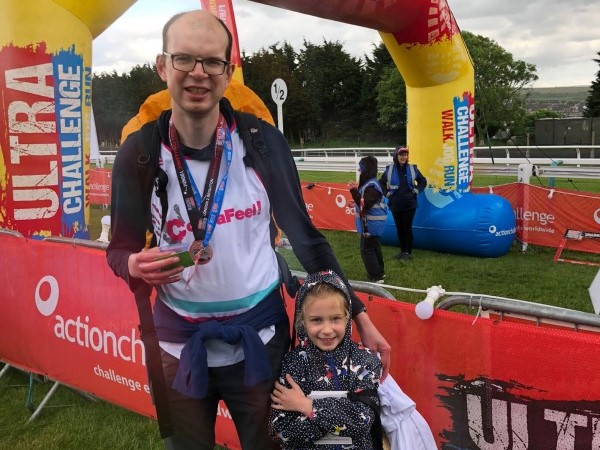
For all the heavy fatigue and the aches and sores bothering me, finally getting to the finish and seeing Rachel and Matilda there immediately cheered me up and instead of feeling crap and tired, I was revived and lively again. This didn’t last for long; with the rain we didn’t hang around at the racecourse and almost as soon as we’d got out of Brighton I was fast asleep in the car.
The Aftermath
In terms of the Ultra Challenge walk: there were 802 entrants for the full 100km continuous challenge. Of these 606 finished (so 196 withdrew). I came in at 554th at 32 hours, 13 minutes and 3 seconds – well inside the bottom 15%. The fastest runner came home in under 10 hours, with the last of the 606 finishers arriving in Brighton two hours after me.
As I stated above, I underestimated the degree of endurance and determination that the walk required. This played out over the two days: my progress was much slower than I’d expected and I hadn’t banked on feeling ill. The kilometres seemed to crawl by as slowly as the hours inexorably ticked by. For example, when I got to the end of Farthing Downs (just past Couldson) around 4.30pm I passed the 29km marker, getting this far in eight hours was in itself good progress. The scary thing to consider was the 71km left to go.
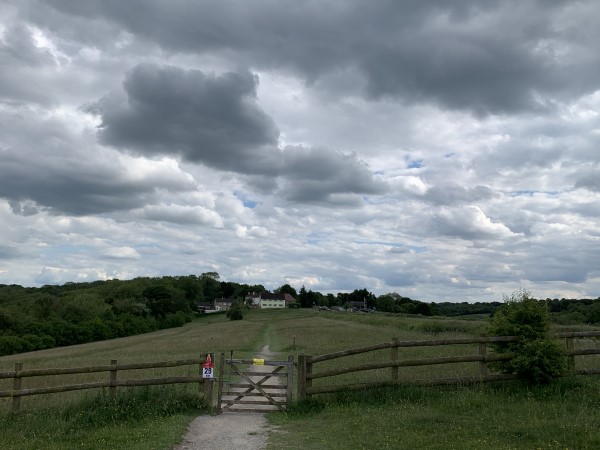
When the night came, this sense of discomfort and disorientation – without any visual points other than the kilometer markers to reference – only increased. I’d misjudged the length of time needed to walk 100km – my estimation of my normal walking pace had me reckoning I’d finish in around 24 hours. I had also underestimated the impact that going for 32 hours would have on my body. The latter point was of course the most important: this wasn’t a race against either the clock or anyone else. If I could keep going and nurse my body and spirit, I would reach my goal.
The reader may well surmise that I didn’t find this walk fun at all. That would be mostly correct: the only section that I found enjoyable in a conventional sense was the 15km or so on the Saturday evening: pleasant open country on a cool evening. The morning was dull, overnight almost traumatic and the Sunday was a tale of bloody determination.
But I would do it again – indeed in the days immediately after the walk, my intention was go back next year and make a better job of it. If I did try to walk 100km again, the mistakes I think I would need to avoid would be:
- Don’t go wandering round Richmond Park until tea time – rest properly the day before and get an early night.
- Don’t go for a spicy curry at 9.30 in the evening! – get a high carb meal early in the evening.
- Don’t go searching for a bacon roll on the run – get breakfast prepared or arranged the night before.
- Don’t take photographs every 500m – stopping and starting reduces your overall pace and requires more time at rest stops re-charging your phone batteries.
- Don’t linger around at rest stops – fuel up and get moving.
- Having lots of drinks bottles – I’ve got a camelback 3l container, using this would avoid stopping to take on liquids from bottles.
- Carrying a heavy(ish) backpack – use a luggage forwarding service to take the extraneous kit over to Brighton.
Ultimately, I think I needed to be much fitter – for example, to be able to keep going for 10km at a time without a rest, instead of five. Being able to get round quicker would reduce the time factor involved in fatigue. Also, being fitter would mitigate the impact on my body and hopefully reduce the likelihood (and impact) of being taken ill again.
Being honest, the experience (of an extreme physical challenge and raising a lot of money for charity) hasn’t properly sunk in yet. Maybe the fact I struggled along the route made the experience an anti-climax. But I got to the end and did what I needed to do, so I really should regard it as a positive thing – I’m sure I’ll get a feeling of achievement and confidence from it, when I look back.

